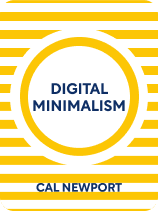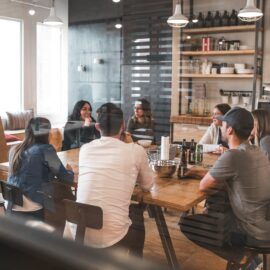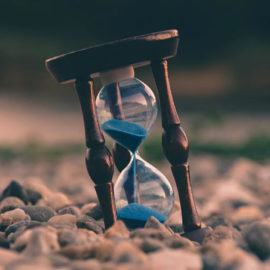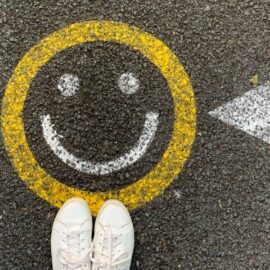

This article is an excerpt from the Shortform book guide to "Digital Minimalism" by Cal Newport. Shortform has the world's best summaries and analyses of books you should be reading.
Like this article? Sign up for a free trial here .
Do you want to implement a digital declutter? What are some benefits of abstaining from the use of digital devices?
A digital declutter refers to temporary abstinence from the use of non-essential digital devices and apps. Doing a digital declutter allows time for you to break your addictive habits, engage with more meaningful activities, and get a clean slate from which you can set the parameters for your long-term digital use.
In this article, we will discuss the three steps of the digital declutter process and some common mistakes.
How to Declutter Your Digital Life in 3 Simple Steps
Many of us are glued to our smartphones, tablets, and laptops, to the point that we’ve lost control of how we spend our time and attention. We feel overpowered and exhausted by the multitude of digital tools at our fingertips, including devices like smartphones and tablets, websites, addictive apps, and social media platforms. If you feel like the use of technology is taking over too much of your time and attention, consider doing this 3-step digital declutter.
Step #1: Outline the Rules for Your Declutter
The digital declutter involves banning all optional technologies, so you must first define what is an optional technology. The answer will be different for everyone, but it should fit two criteria.
First, “technology” includes websites, apps, and other digital tools that you access through your phone or computer. Video games and television and streaming services are gray areas, depending upon whether you feel that you rely on them in a way that’s cluttering your life. If you often feel an addictive pull to your gaming system, or if binging on Netflix constantly impedes your productivity, ban them for the declutter.
Second, “optional” technology is something that you can ignore for a month without causing harm to your personal or professional life. Be careful to distinguish between technologies that are essential and those that are merely convenient. You may even find that certain inconveniences are valuable. For example, social media provides an easy way to stay connected with friends and family, but it’s not the only way, and detoxing from Facebook may clarify which friends are worth the extra effort to stay in touch with. Additionally, talking to those friends on the phone or in person—rather than simply commenting on their photos—could strengthen those relationships.
There may be technologies that are essential only under specific circumstances. For example, in an experiment in which more than 1,600 volunteers did digital declutters and reported their experiences to the author, one participant wanted to cut down on text messaging, but she still needed to use it to communicate with her husband when he traveled. In order to achieve both, she set special alerts to go off when her husband sent a message, and she silenced all other text notifications. Another person limited his podcast listening to only during his daily two-hour commute. In the experiment, roughly 30 percent of participants’ self-imposed rules were nuanced like this, which gave volunteers the freedom to customize their experiences to their needs—increasing their chances of success. By the same token, limiting the number of such conditions keeps the declutter simpler to follow.
Once you’ve determined your list of banned technologies and outlined your operating procedures for the others, write everything down and put the paper somewhere you’ll see it every day.
Step 2: Declutter for 30 Days
Now that you’ve set the rules, the next step is to follow them for one month. At first, it will be hard to break your tech use habits, and you may find yourself absentmindedly reaching for your phone. Typically, those reflexes fade after a week or two—and resetting those impulses is a major reason that the digital declutter is a critical first step to adopting digital minimalism.
Without the digital declutter, your addictions and habits would cloud your judgment and make certain technologies seem more essential than they are. But after 30 days of declutter, when it’s time to reintroduce select technologies back into your life, you’ll be better able to make those decisions. You’ll know the true consequences of being disconnected from certain technologies, and you may have discovered that they’re smaller than you would have expected. For example, at the start of the declutter, you may fear that without Twitter you would be woefully uninformed, but you could discover that reading the morning paper leaves you more informed and less distracted.
The digital declutter is also essential because it gives you time to reconnect with your interests and passions by revisiting old activities and trying new ones—and you may be surprised by how much time you have without distracting technologies taking your attention. Participants in the digital declutter study discovered that, by the end of the 30 days, they had time to finish multiple books, take up old hobbies, start blogs, spend quality time with family, and even shop for and buy a house.
It’s key that you brainstorm alternative activities before you begin the declutter; if you start the declutter and are jonesing for your smartphone, it will be harder to resist if you don’t already have an alternative activity in mind. In Part 2, we’ll talk more about how to come up with meaningful ways to spend your newfound time.
Step #3: Reintroduce Select Technology
After you complete the 30-day declutter, you’ll choose which technologies to reintroduce into your life, and you’ll decide how to use them. This is a critical step in turning the declutter into a long-lasting change—without it, you rescind the control you’ve taken over your digital life.
In order to determine which technologies to reintroduce, you must ask yourself three questions:
- Does the technology directly support a value that’s important to you? If family is important to you, you may use Facebook to keep up with family news and photos.
- If so, does this technology offer the best way to support that value? At this point, you probably have to admit that Facebook is not the best way to keep you close with family. You might consider phone calls, emails, and get-togethers instead.
- If so, how will you use the technology so that you’re only using the feature that supports that value? Lay out the rules for when or how often you use the digital tool, how you use it, and how to minimize distractions. For example, you will only check Facebook for an hour on weekends, you’ve deleted the app from your phone so you have to log in from your computer, and you’ve unfollowed everyone but your family members to avoid getting distracted on your news feed.
Mistakes to Avoid
When you implement your digital declutter, beware of two mistakes that often derail people:
- Don’t make your rules for allowed technology use too strict or too vague. If your rules are unrealistic or unclear, you’ll be more likely to break them and give up. For example, if you make a blanket rule not to watch Netflix at all, you may be shooting too high and setting yourself up for failure. Alternatively, if you make a rule that you’ll only check Twitter a few times a day for news updates, the parameters may be too loose, as “a few” becomes eight times a day, and your quick scan of headlines snowballs into a scroll through your entire feed.
- Don’t view the detox as a 30-day break before returning to your regular technology use—rather, think of it as the first step in your technology transformation. If you have the commitment to overhaul your digital life, you’ll be less likely to fold in times of weakness during the detox.

———End of Preview———
Like what you just read? Read the rest of the world's best book summary and analysis of Cal Newport's "Digital Minimalism" at Shortform .
Here's what you'll find in our full Digital Minimalism summary :
- Why you're addicted to technology (and how tech companies feed your addictions)
- How a focus on social media is bad for real-life relationships
- How to transform your tech habits to get the best benefits without the drawbacks






